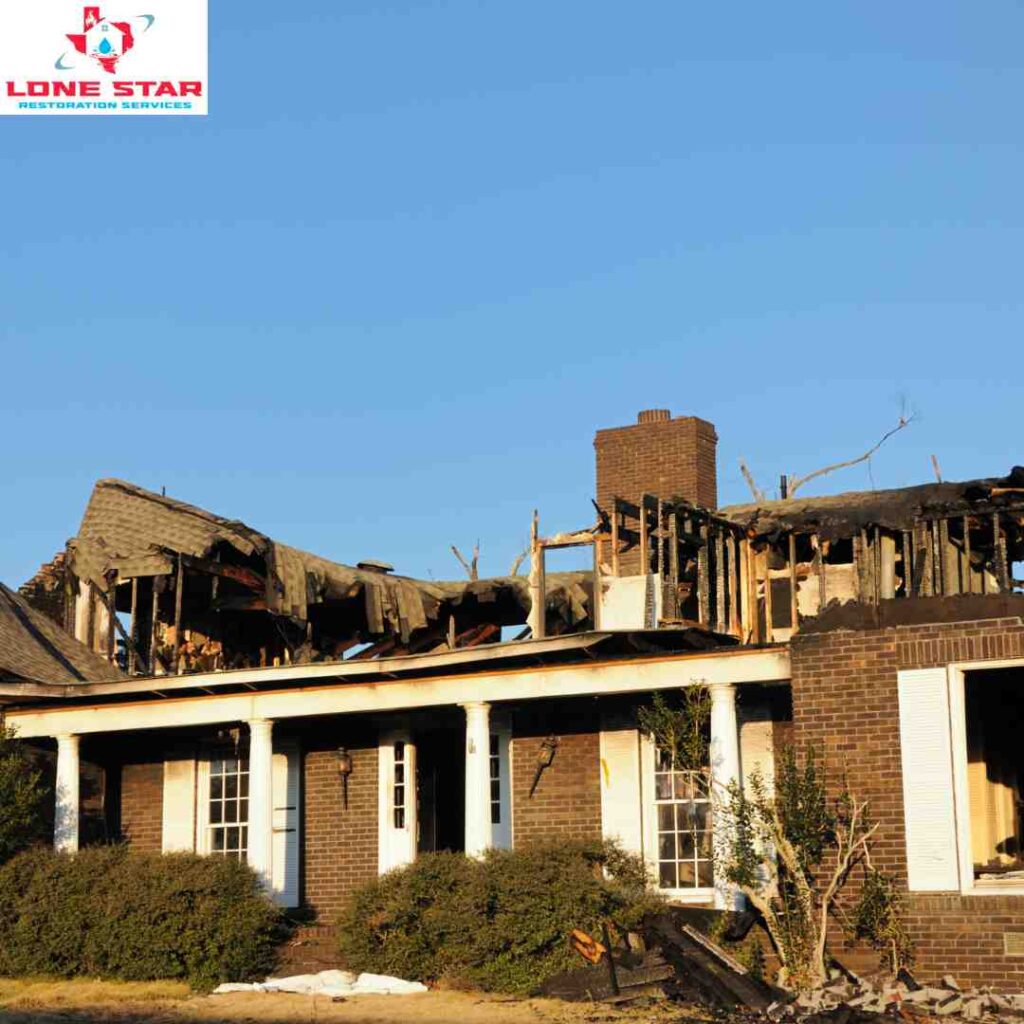Fire Damage Restoration Expert: Assisting You in Rebuilding Post-Blaze
Fire can be one of the most devastating events a homeowner or business can face, leaving behind not just charred ruins but also a trail of structural weaknesses, smoke damage, and emotional distress. When disaster strikes, the road to recovery can seem daunting. However, with the right expertise and swift action, it’s possible to restore and rebuild what was lost efficiently. In this blog, we will delve into how expert fire damage restoration services play a crucial role in helping you rebuild your life and property after the blaze. Understanding the fire damage restoration process can offer reassurance and clarity during a turbulent time, from initial damage assessment to the final touches of reconstruction.
Understanding Fire Damage
Fire damage extends beyond the immediate burn and char marks visible on structures. It encompasses a variety of impacts that can compromise both the integrity and safety of a building. Here’s a breakdown of the types of damage typically encountered after a fire:
- Structural Damage: The intense heat of a fire can weaken the building’s structural components, including beams and foundations, making them potentially unstable and unsafe.
- Smoke Damage: Smoke can permeate multiple surfaces, embedding a persistent odor and causing discoloration and corrosion over time. It affects not just the immediate area of the fire but can spread to more distant parts of the building.
- Soot Damage: Soot is the residue left by the combustion of materials during a fire. It can cover surfaces and infiltrate HVAC systems, spreading throughout a property and posing health risks due to its acidic nature.
- Water Damage: Often overlooked, water damage from firefighting efforts can be extensive. The water used to extinguish the fire can saturate structures and furnishings, leading to issues like mold growth and additional structural weakening.
Understanding these various forms of damage is critical for addressing each aspect effectively during the restoration process. Each type of damage requires specific cleaning techniques and restoration strategies to ensure the property is safely restored to its pre-fire condition.
Initial Assessment and Safety Measures
Before the actual restoration process can begin, a thorough assessment of the fire-damaged property is essential. This initial evaluation helps restoration professionals understand the extent of the damage and plan the necessary steps for recovery. Here’s how the assessment and safety measures are typically handled:
- Safety Inspection: The priority is ensuring the building is structurally safe to enter. Professionals will check for signs of structural damage that could pose risks, such as weakened floors and walls, compromised support beams, and damaged roofing.
- Identification of Hazards: Experts look for immediate hazards, including electrical issues, gas leaks, and chemical exposures that could endanger both the restoration team and the building’s occupants. Ensuring these hazards are managed is critical before any cleanup or repair work begins.
- Documenting Damage: Detailed documentation of all damage through photographs, videos, and written records is crucial. This information is vital for insurance claims and for planning the restoration project.
- Assessment of Salvageable Items: The assessment also involves identifying which items and areas of the property can be cleaned, restored, or must be replaced. This includes examining furniture, appliances, and personal belongings for potential recovery.
- Developing a Restoration Plan: Based on the assessment, restoration experts devise a plan that outlines the required repairs, cleaning methods, and timeline for the restoration process. This plan is tailored to address all identified issues efficiently and effectively.
This initial phase is critical as it sets the foundation for all subsequent restoration efforts, ensuring that every action taken is informed and strategic, with safety as the paramount concern.
Detailed Cleanup Process
After ensuring the property is safe and thoroughly assessed, the next crucial step is the detailed cleanup process. This phase is vital for mitigating further damage and preparing the site for restoration and repair. Here’s what the detailed cleanup involves:
- Soot and Debris Removal: The first task is to clear all visible soot and debris left by the fire. This involves physical cleanup as well as the use of industrial-grade vacuum cleaners designed to remove fine particulates from surfaces and air.
- Smoke Odor Elimination: Eliminating the pervasive smoke odor requires specialized techniques and equipment. Professionals often use thermal foggers and ozone treatments, which neutralize odorous particles instead of merely masking them. This step is essential to restore the air quality and make the environment safe for occupants.
- Water Extraction: Any standing water left from firefighting efforts must be promptly removed to prevent further damage and mold growth. This is achieved through the use of powerful pumps and dehumidifiers that dry out the premises quickly and efficiently.
- Drying and Humidification: After water extraction, the area needs to be thoroughly dried to remove residual moisture. Specialists use dehumidifiers, air movers, and other drying equipment to stabilize the humidity levels and prevent warping, swelling, or mold proliferation.
- Cleaning and Sanitizing: All surfaces are cleaned and sanitized to remove toxins and contaminants that fires leave behind. This includes walls, floors, ceilings, and non-salvageable items. Antimicrobial treatments may also be applied to prevent mold and mildew.
- Corrosion Mitigation: Fires can leave acidic residues that corrode metals and deteriorate materials over time. Prompt cleaning and application of corrosion inhibitors are crucial to protecting and preserving various structures and contents within the property.
This comprehensive cleanup is essential not only for aesthetic and comfort reasons but also to ensure the long-term structural integrity of the property and the health of its inhabitants.
Restoration and Reconstruction
Once the initial cleanup is complete, the focus shifts to the restoration and reconstruction phase, which is crucial for returning the property to its pre-fire condition. This stage involves a combination of repairing damaged structures and replacing components that are beyond repair. Here’s an overview of the restoration and reconstruction process:
- Structural Repairs: Any structural damage, such as weakened walls, burned-out sections of the roof, or compromised flooring, must be securely repaired or rebuilt. This may involve extensive carpentry, masonry, and other construction techniques to ensure the building meets safety standards.
- Interior Reconstruction: This includes the repair or replacement of drywall, insulation, and interior finishes such as paint and wallpaper. Attention to detail is critical to restore the aesthetic aspects of the property and ensuring that every element matches or complements the existing interiors.
- Electrical and Plumbing Systems: Fire can severely damage wiring and plumbing. All affected systems need to be inspected and tested by licensed professionals who can repair or replace electrical circuits, pipes, and fixtures to ensure they are safe and functional.
- Flooring Replacement: Depending on the extent of the damage, flooring may need to be completely replaced or repaired. This could involve laying new carpet, hardwood, tile, or other flooring materials.
- Fixtures and Fittings: Replacement of damaged or destroyed fixtures and fittings, such as lights, cabinets, windows, and doors, is also part of the reconstruction process. These elements are vital for the functionality and aesthetics of the space.
- HVAC System Restoration: Heating, ventilation, and air conditioning systems often require cleaning, repair, or replacement, especially if they have been contaminated with smoke or water. Ensuring these systems are fully operational is essential for maintaining a comfortable and safe indoor environment.
- Final Cleaning and Deodorization: Even after repairs and replacements, a final thorough cleaning and deodorization pass is necessary to ensure that no traces of smoke or chemical residues remain. This step helps in restoring the fresh and clean environment of the home or business.
Restoration and reconstruction can be a complex process, requiring the coordination of various trades and professions. Working with experienced fire damage restoration professionals ensures that this process is managed efficiently, helping property owners recover from fire damage as smoothly and quickly as possible.
VI. Preventative Measures for Future Safety
After experiencing a fire, it’s crucial to implement preventative measures to reduce the risk of future incidents. These measures not only safeguard your property but also provide peace of mind. Here’s how you can enhance fire safety in your home or business:
- Install and Maintain Smoke Detectors: Ensure that smoke detectors are installed on every level of your property, inside bedrooms, and outside sleeping areas. Regularly test them and replace batteries annually or as needed to ensure they are always functional.
- Regular Inspection of Electrical Systems: Many fires are caused by faulty electrical systems. Have a professional inspect your electrical wiring, appliances, and outlets periodically to address any potential hazards.
- Fire Extinguishers: Keep fire extinguishers handy, especially in high-risk areas like kitchens and garages. Make sure they are easily accessible and that household members or employees know how to use them.
- Create and Practice Fire Escape Plans: Develop a fire escape plan that includes at least two exits for every room. Conduct regular fire drills to ensure everyone knows what to do in case of an emergency.
- Use Fire-Resistant Materials: When rebuilding or renovating, choose materials that are resistant to fire. These include fire-rated drywall, doors, and fire-resistant insulation and siding.
- Clear Debris Regularly: Reduce fire risk by keeping your property free of debris, such as dried leaves and branches, particularly around heating sources or electrical installations.
VII. Conclusion
Recovering from fire damage is a challenging journey that involves meticulous cleaning, detailed restoration, and often extensive reconstruction. By understanding the process and working with skilled professionals, you can navigate this difficult time more effectively and ensure your property is restored to its former state or better.
We at Lone Star Restoration Services understand the emotional and financial stress caused by fire damage. Our expert team is committed to not only restoring buildings but also rebuilding lives. With our comprehensive fire damage restoration services, you can rest assured that your property is in capable hands. Remember, taking proactive safety measures can significantly decrease the likelihood of future fires, protect your investment, and ensure the well-being of everyone who uses the space.
By embracing both restoration and prevention, you can secure your property and look forward to a safer future. If you have any questions or need assistance, don’t hesitate to reach out. We are here to help every step of the way.





